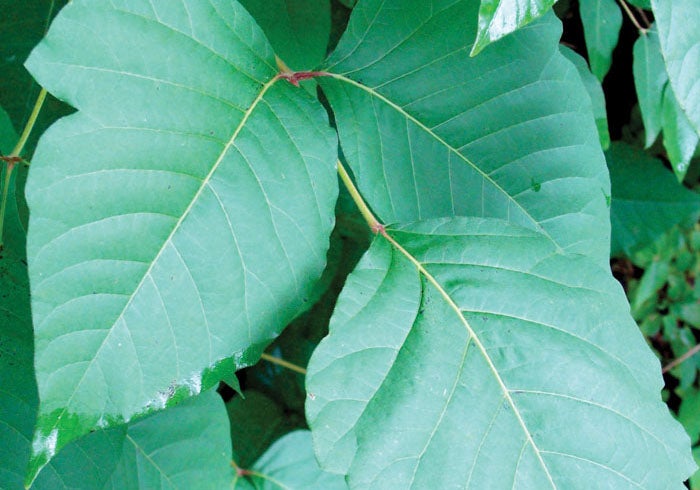Darrell Blackwelder column: Now is an excellent time to control poison ivy
Published 12:00 am Sunday, May 9, 2021

- Poison ivy
A constant concern for those that work outside is skin rash from poison ivy. In severe cases, the skin rash (dermatitis) may hospitalize its victims. Identification and control of poison ivy is one step in prevention of dermatitis.
Poison ivy is commonly found in undergrowth in wooded areas, fence rows, cleared lots or growing as a vine on trees. The vine may grow as a low -rowing shrub in the absence of trees or other support objects.
The stems of poison ivy are smooth with a light brown to gray. The leaves are very ornate and shiny with broad serrated margins. The leaves are trifoliate, (groups of three) producing grey-white berries 1/4 inch in diameter. These berries are a favorite food of birds and a major source of its distribution.
Hydro-urushiol is the poisonous substance in the leaves and stems but also found in the roots, bark and berries. The oily substance does not dissolve in water and it easily adheres to a number of objects including your pets, clothing, garden tools, golf clubs, guns or fishing rods. Smoke from burning stems or leaves is another source. Splashing sap from stems and twigs when cutting trees is often a source in the winter months while cutting firewood. Physical contact is necessary to obtain the poisonous oil and cause a skin rash.
The susceptibility of dermatitis depends upon the individual. Minute amounts of the oil can cause a rash. The poisonous oil penetrates skin tissues creating sensitive tissues.
Now is an excellent time to control poison ivy. The best time to control poison ivy is just before and after bloom in the early summer. Brush killers or herbicides that contain dicamba or trichlopyr effectively controls poison ivy. Glyphosate or Roundup will also kill the vine.
Carefully follow the instructions provided on the label. Contact the Cooperative Extension Service if you have questions about applying any pesticides. More detailed information on poison oak and poison ivy can be found online at http://poisonivy.aesir.com/view
Darrell Blackwelder is the retired horticulture agent and director with the North Carolina Cooperative Extension Service in Rowan County. Contact him at deblackw@ncsu.edu .



